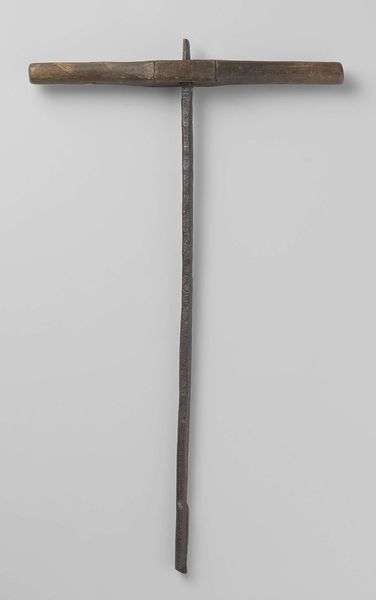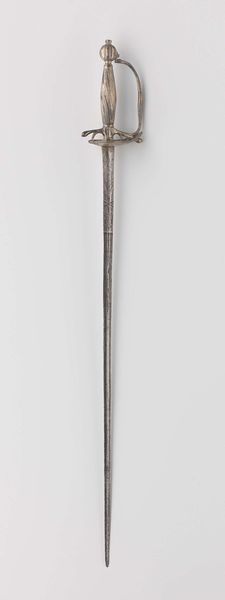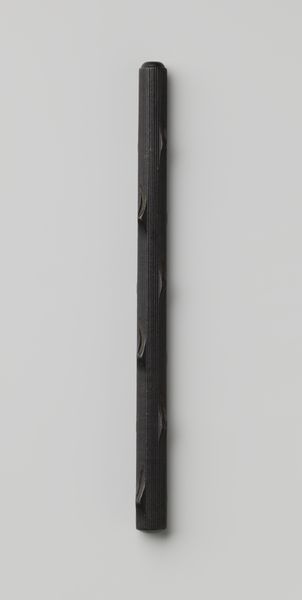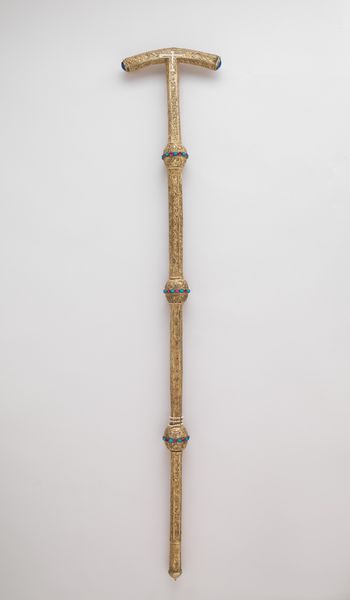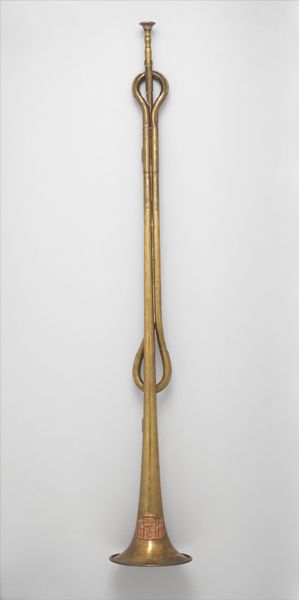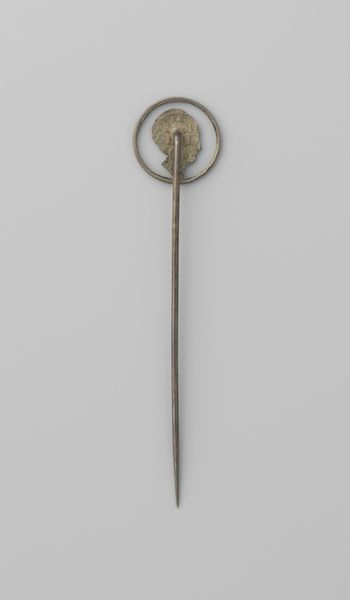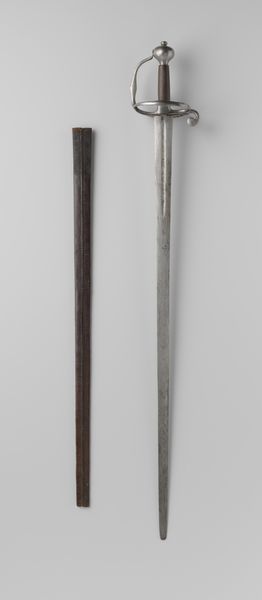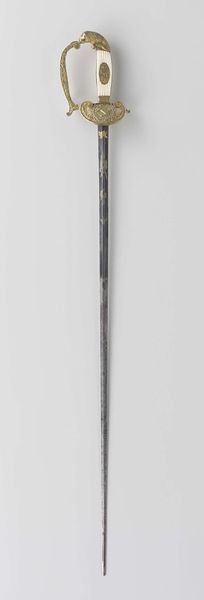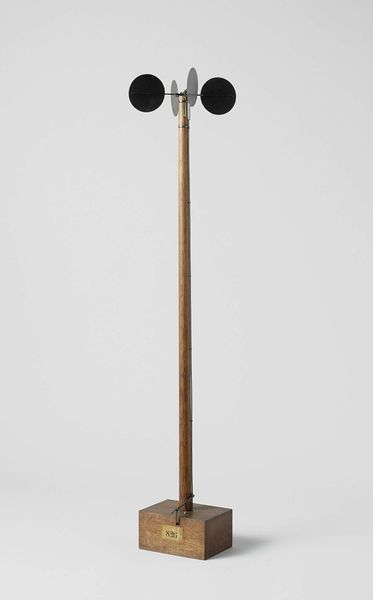
carving, metal
#
portrait
#
weapon
#
medieval
#
carving
#
metal
#
history-painting
#
armor
#
sword
Dimensions: L. 50 5/8 in. (128.5 cm); L. of blade 40 3/4 in. (103.5 cm); W. 8 7/8 in. (22.5 cm); Wt. 2 lb. 15 oz. (1332.4 g)
Copyright: Public Domain
Editor: Here we have what's described as a “Practice Sword” crafted sometime between 1550 and 1589 by Ulrich Diefstetter. It’s made of metal and appears to have carved details. The object itself feels incredibly austere to me. How would you interpret it? Curator: Well, let's think about this from a material perspective. It's a sword, yes, but it’s designated as a practice tool. This immediately directs our attention to its production and intended use. We have to ask ourselves, what does "practice" imply in the late 16th century? Who would have been engaging in such training and what kind of labor goes into making a metal sword to be used in training rather than in combat? Editor: That’s a fascinating point. It’s easy to forget the sword is not an end product but rather a means of development. What can you tell about labor with the process and carving details of the material? Curator: Precisely! The fact that this practice sword features detailed carvings points to a level of artistry—it’s a functional object elevated through skillful craftsmanship. The production process wasn't just about churning out functional weapons; the maker was interested in embellishing these objects. Who might have paid for such craft, and how does that indicate social hierarchy? Editor: It feels as though something that could have just been about basic utility, that has then become something more ornate by craft. Curator: And we must consider how the consumption of the object is related to a demonstration of the owner's power. Remember also that swordmaking traditions and blacksmithing practices weren't monolithic but also regional with differing techniques. These aren't merely weapons but also representations of identity and skill. Editor: That's definitely changed my perspective on it. I now see this as a dynamic thing with use and production all feeding back into societal meanings of power. Thanks so much! Curator: Of course. By emphasizing materiality and manufacture, we can better consider an object's historical value.
Comments
No comments
Be the first to comment and join the conversation on the ultimate creative platform.
